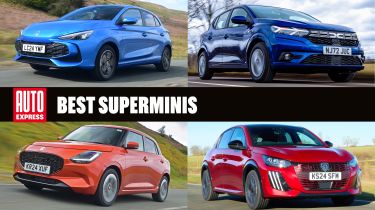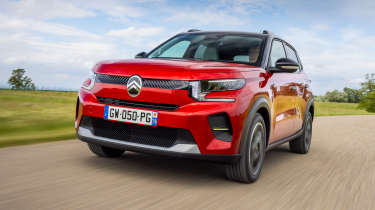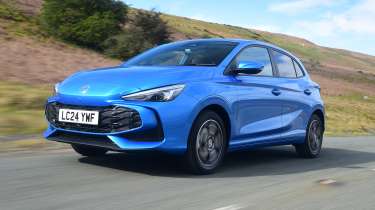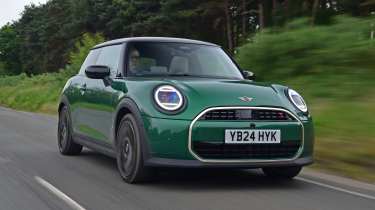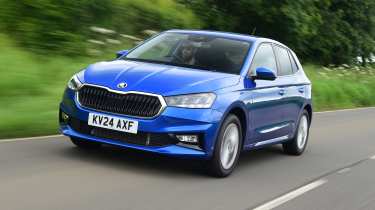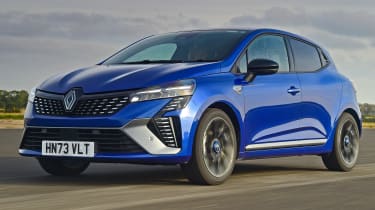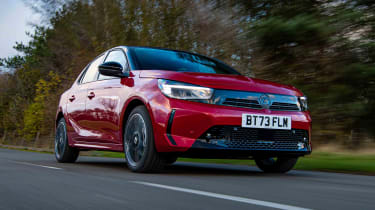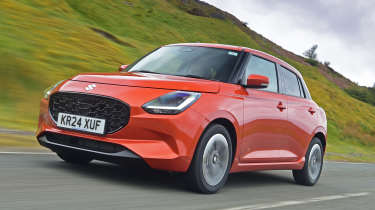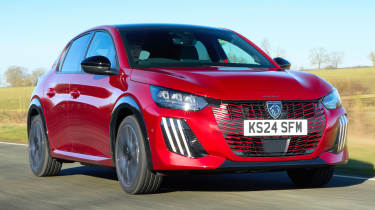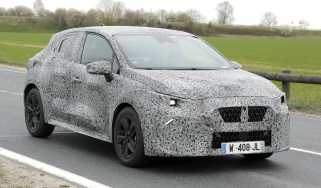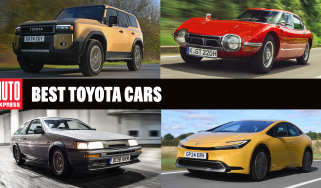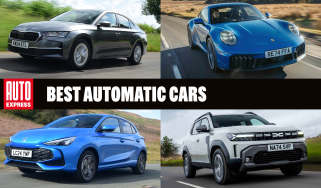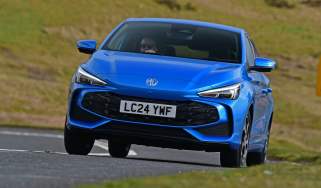Best superminis to buy 2025
It's a hard-fought class, but these are the 10 best superminis on sale right now
The best superminis are small cars that make you wonder if you really need anything bigger. There are so many excellent ones to choose from, knowing which should you put your money into can be hard. We've put together our top 10 superminis based on our extensive testing of every model on the market to help you choose which supermini is right for you.
With choices in the smaller city car segment having dwindled in recent years, superminis are the go-to choice for most buyers prioritising compact size and low costs. The best superminis are much more than urban runabouts, however, showing levels of sophistication and practicality that mean they can fill a varied role. Today’s small SUVs offer similar qualities but tend to cost a little more to buy than their supermini equivalents.
The top supermini choices tick that crucial low-cost box, with good efficiency and low insurance premiums. They are also adept in various kinds of driving, manoeuvrable in town but quiet and powerful enough for longer journeys and fun on the right B-road. We also look for decent practicality with room in the back for kids and a good-sized boot. Scroll down for our pick of the best new superminis on sale…
1. Citroen C3
- Prices from £18,000
| Pros | Cons |
|
|
A lot of people go for smaller cars because with them comes a smaller price tag and the Citroen C3 is something of a bargain.
The C3 isn’t a trend setter when it comes to driving experience or luxury, that’s not what the car is about. It’s not a showy, shouty car, but instead focuses on nailing the essentials at a sensible price point. It comes with generous standard equipment, a comfy drive, affordable running costs, a low price point, practicality, and a fully electric option.
It’s a no-nonsense, likeable car that many can actually afford. It’s why the Citroen C3 was the Auto Express 2024 Supermini of the Year, and the electric Citroen e-C3 was the 2024 Auto Express Car of the Year.
2. MG3
- Prices from £18,495
| Pros | Cons |
|
|
The last generation of MG3 was on the market for over a decade. It was a fine car in its own right, but the newest version is far more sophisticated and comes with a tempting sticker price.
One of the MG3’s many highlights is its hybrid powertrain. Not only will it return more than 60mpg, it makes the car fantastic to drive. MG’s effort also comes with a comprehensive equipment list that makes rivals seem under specced. For those concerned about safety, it has lane-keep assist, a forward collision warning system, adaptive cruise control, and more as standard.
It’s not all smiles and light for the MG3 though - rear seat passengers might struggle for space, and the MG brand’s reputation in our Driver Power customer satisfaction survey isn’t as stellar as it could be.
3. MINI Cooper
- Prices from £23,200
| Pros | Cons |
|
|
It’s a MINI and it’s… super. In more than one sense of the word. The latest iteration of the MINI Cooper is one of the best to roll out of the Oxford factory. It’s keenly priced - starting at below £25,000 - but comes with an upmarket feel, brilliant fit and finish, and materials befitting a car with a much higher price tag.
It comes with MINI’s signature retro look, pleasingly updated to help the car feel fresh. Under the skin is where things have taken a significant leap forward. New engines have upped efficiency and performance, while a new EV powertrain can give up to 249 miles of range on the WLTP cycle.
The electric Cooper E does come with a weight penalty compared to its ICE siblings but it still retains the fun factor that MINIs are known for. It’s not just for throwing around the countryside - it’s a perfect car for the city as well.
4. Dacia Sandero
- Prices from £13,800
| Pros | Cons |
|
|
Dacia’s bread ‘n butter Sandero is a full-size supermini with a price tag that undercuts smaller city cars.
Based on the current Renault Clio, the Sandero comes with generous space, and a huge 328-litre boot (with the seats up), which gives some cars in the class above a good run for their money.
Fans of LPG will be keen on its B-Fuel powertrain, though most will stick with the tried and tested 1.0-litre petrol engine. Thanks to a turbocharger there’s plenty of low down grunt, which means decent performance and impressive efficiency - we saw almost 50mpg during our testing. It’s a comfortable car, but far from the most refined.
The Sandero may be a no-frills car that prizes value over all else, but that value doesn’t mean it suffers on the quality front. Add £1,000 to the base model and you’ll get rear parking sensors, an eight inch touchscreen, Apple CarPlay, Android Auto, keyless entry, auto lights, and auto wipers. There’s one downside that some may not be able to overlook: a two-star Euro NCAP rating.
5. Skoda Fabia
- Prices from £19,900
| Pros | Cons |
|
|
Supermini staple, the Skoda Fabia, does plenty of things very well indeed. It’s practical, spacious, and comes with efficient engines that’ll suit most buyers. It’s geared more for comfort than speed, delivering a refined, relaxing drive. With great steering and low weight, the Fabia handles well, and is nimble in town.
There isn’t a hybrid option here, but over a 9,000-mile long-term test we averaged more than 55mpg - no small number. The Fabia looks good inside and out, and comes with plenty of standard gear.
Passengers will enjoy the ample leg and head room in the car, with six footers being able to sit comfortably behind two tall adults. Sitting three in the rear is possible without too much of a squeeze. Those concerned about safety shouldn’t be worried - it comes with a five-star rating from Euro NCAP.
6. Toyota Yaris
- Prices from £22,700
| Pros | Cons |
|
|
The latest Yaris is arguably Toyota’s most focussed supermini yet. In a super competitive market, the five-door yaris keeps things simple. With a single engine option - a 1.5-litre hybrid - that delivers 114bhp, it’s got more than enough go to make it a great performer around town.
Toyota says you’ll spend about 80 per cent of your time in pure-electric mode when driving around town, which can propel the car to 80mph before the petrol motor kicks in - so you can conceivably hit the motorway for a spell and not burn any fuel at all. Hybrid tech means stellar fuel economy - we saw 65mpg during tests in mixed driving.
A great performer in tight urban areas, it won’t be caught out on motorways either. Buyers can be reassured by excellent levels of safety tech, too. It looks good, but be wary - it’s not the most spacious car in the supermini class for passengers or luggage.
7. Renault Clio
- Prices from £18,400
| Pros | Cons |
|
|
The Renault Clio, a former Auto Express New Car Award winner, still manages to best some worthy challengers. The latest model comes with head turning styling, and an impressive hybrid powertrain.
With good rear legroom and a roomy 391-litre boot (more space than you get in a Volkswagen Golf), it’s up there on the practicality front. Renault says the Clio E-Tech hybrid can return up to 67.3mpg, which is pleasing. Less so is despite having 143bhp to play with it doesn’t feel all that quick.
A compliant chassis means it’s hard to upset the new Clio in the wild - potholes will have a job to cause much impact in the cabin. Drivers will also enjoy its quiet, spacious, well equipped cabin.
8. Vauxhall Corsa
- Prices from £18,500
| Pros | Cons |
|
|
One of the best-selling cars in the UK, the latest Vauxhall Corsa is a convincing blend of performance, economy, comfort, and driving experience than its predecessor. It comes with one of the best petrol engines in its class, and thanks to sharing a platform with the Peugeot 208, drives well.
In addition to the stellar petrol motor, there’s the EV Corsa Electric option that will suit buyers looking for greener fare. There’s plenty of opportunity for personalisation thanks to bold colours, and options that allow you to create unique cars.
9. Suzuki Swift
- Prices from £19,200
| Pros | Cons |
|
|
Small, light, and fun, the Suzuki Swift is a genuinely enjoyable little car to drive. Available with one engine - a 1.2-litre mild hybrid petrol engine - it puts out a modest 81bhp, but because the Swift is so light, low power doesn’t come with much of a cost. It can be a bit noisy on the move though.
While there’s only one motor on offer, it can come with a CVT automatic, five-speed manual, front, or all-wheel drive. There’s a Swift to suit just about everyone. Drive carefully and you’ll see more than 64mpg on a run.
A low cost of entry combined with generous standard kit help the Swift stand out where others look a bit pedestrian.
10. Peugeot 208
- Prices from £24,000
| Pros | Cons |
|
|
A great looking supermini, the Peugeot 208 brings a sense of style, and huge feelgood factor to the space - which helps it stand out from capable rivals.
Along with the Vauxhall Corsa, it sits on the Stellantis CMP small car platform. Designed from the outset to suit different powertrains, the Peugeot 208 can come with ICE, hybrid, or a fully battery electric setup. There’s a 208 for everyone.
The best superminis to buy now
| Rank | Car | Overall rating | Efficiency, CO2 and running costs rating | Reliability and safety rating |
| 1 | Citroen C3 | 4 | 4 | 3.5 |
| 2 | MG3 | 5 | 4.5 | 4 |
| 3 | MINI Cooper | 4 | 3.5 | 3.5 |
| 4 | Dacia Sandero | 4 | 4.4 | 3.5 |
| 5 | Skoda Fabia | 4 | 4 | 4 |
| 6 | Toyota Yaris | 4 | 4.2 | 4.5 |
| 7 | Renault Clio | 4.5 | 4.5 | 4 |
| 8 | Vauxhall Corsa | 3.5 | 3.5 | 3.5 |
| 9 | Suzuki Swift | 3.5 | 4 | 3.5 |
| 10 | Peugeot 208 | 4 | 3.9 | 4.5 |
How we choose the best superminis
We go to great lengths to bring you the definitive verdicts on every supermini. Here’s how we test them and what we’re looking for…
Intensive supermini testing
Our road test teams have tested every supermini currently on sale in the UK and the majority of the available models have also been group tested against their key rivals in a back-to-back assessment. Some have also been on the Auto Express long-term test fleet where we live with cars for a period of around six-months to really understand how it fits in with everyday life.
Focus on what supermini buyers really want
Cost is crucial in the supermini market as these are some of the most affordable cars to buy and run. We look at efficiency, both on the official tests and in the real world, as well as insurance costs and general running costs in order to build a complete picture for what a supermini is likely to cost you to run.
Maneuverability and ease of driving is also very important for buyers who typically use these cars in urban areas, on the school run and for shopping trips. A good supermini feels nimble and engaging on the road, and it should combine these qualities with good visibility for parking. Finally, the best superminis can’t just be good small cars, they need big car qualities to really stand out. Interior space, boot space, technology and safety are never going to match larger, more expensive options from the classes above, but top superminis can still deliver surprisingly well on these counts.
How to choose the best supermini for you
With so many superminis out there, it’s hard — but not impossible — to find the right one for you. If you go about choosing the right way, the process can even be quite fun.
The first thing you need is a clear idea of what you want before visiting a dealership. How many miles are you going to do? How often do you carry passengers? How much luggage do you have? What are your must haves in terms of driver assistance features, smartphone integration, infotainment and cruise control? Make sure you’ve got your budget in mind, too - not just for fuel, insurance and the cost of the car, but for service and maintenance as well.
Should you choose a petrol, hybrid or electric supermini?
Petrol and hybrid superminis are the norm these days. They’re quick and efficient, which means it’s harder to recommend diesel superminis to most — and fewer manufacturers are offering diesel anyway. Small diesel cars only really excelled on motorways, and if that’s what you’re after then you’re probably best off looking at something more refined from the class above.
When it comes to power, modern turbocharged petrol or hybrid cars are designed to blend performance with strong economy. An engine with 100bhp or a little more will probably offer the best compromise between the two.
Electric power is increasingly popular, although you do have to balance the superior running costs with the upfront price, which tends to be on the high side. If you don’t do enough mileage, you might struggle to make your money back in fuel savings. However, small EVs are fantastic around town.
How to take a supermini test drive
Never underestimate the power of a test drive. Driving position, clutch weight, seat comfort, visibility, ease of using the controls are just some of the factors that can transform the perfect car on paper into a nightmare in the real world. Trying a car before you buy it is essential.
On your test drive, tailor your experience to the sort of things you usually do. If you’re a town driver make sure the car can handle tighter spots - try parallel parking, a three point turn, reversing into a bay, and anything else you do regularly. If you’re a countryside commuter, find the sort of road you’re used to and see how the car feels.
How to spec your supermini
Most entry level superminis come with generous standard equipment, but keep an eye on how the costs stack up as you move up the range. Work out what you don’t want (or need) to make sure you don’t end up paying extra for unnecessary gear. A fully-loaded supermini can end up costing more than a larger and more sophisticated car from the class above, and it’s unlikely that a high spec will be reflected in high residual values when the time comes to sell.
Think about safety when choosing a supermini
If safety is a concern, keep an eye on your chosen car’s Euro NCAP rating. Many models in this class come with good levels of active and passive safety tech, but not all. Some superminis have received low star ratings from Euro NCAP as a result of active safety aids not being included as standard, but that doesn’t necessarily mean that the adult and child occupant protection scores are low. It’s worth checking our reviews to get the full story.
Fancy something smaller? These are the best city cars to buy...
